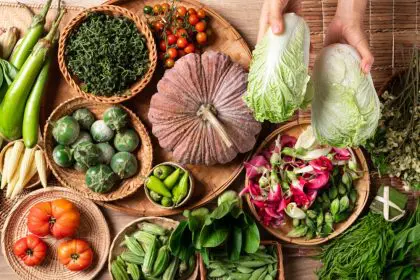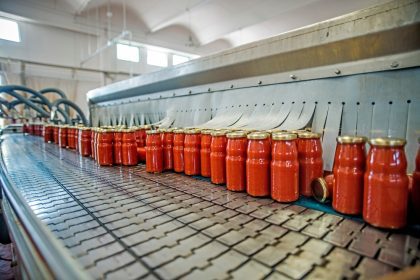Remember when you could grab a cheap avocado for your morning toast without thinking twice? Those days are rapidly coming to an end. A financial storm is brewing in the grocery aisles across America, and your wallet is directly in its path. Starting March 4, 2025, the Trump administration will implement a whopping 25% tariff on Mexican and Canadian imports, effectively turning your regular shopping trip into a budget-busting adventure.
This isn’t just another minor price adjustment that you can shrug off. We’re talking about a seismic shift that will affect nearly everything you put in your shopping cart. Why? Because Canada and Mexico aren’t just any trading partners, they’re the agricultural backbone of American supermarkets, supplying a massive 77% of our fresh produce and over a third of the meat that lands on your dinner table.
The pantry panic is real
Imagine walking down the produce section and seeing avocados priced like luxury items. Picture your favorite cereal suddenly costing a third more than it did last month. This isn’t fear-mongering, it’s simple economic math playing out on your grocery receipt.
Target’s CEO Brian Cornell didn’t mince words when addressing the coming price surge. Winter vegetables and fruits will be hit particularly hard since Mexico serves as America’s winter garden, providing fresh produce when domestic farms are dormant. When retail giants start sounding alarm bells about imminent price hikes, it’s time to take notice.
Supply chain experts are equally concerned. The ripple effects will touch virtually every aisle in your local grocery store. From the bread section to the dairy cooler, from fresh produce to packaged goods, few items will escape the impact of these sweeping tariffs.
What makes this situation particularly challenging is the sheer scope of affected products. Unlike previous tariffs that targeted specific industries, these new measures cast a wide net across the food supply chain, creating a perfect storm for consumer prices.
The Mexican food connection you never realized
Mexico’s role in your daily diet goes far beyond the occasional taco night. Those tomatoes in your salad? Likely from Mexico. The bell peppers in your stir-fry? Mexican farms probably grew those too. The berries in your morning smoothie? You guessed it.
Perhaps most dramatically, 90% of all avocados consumed in America come from Mexican orchards. That guacamole habit is about to become significantly more expensive. The same goes for strawberries, raspberries, bell peppers, and countless other produce items that have become kitchen staples.
Mexican agriculture has strategically positioned itself as America’s fresh food supplier, developing efficient growing regions and transportation networks specifically designed to serve U.S. markets. This deep integration means there’s no quick or easy substitution when these imports suddenly become 25% more expensive.
Seasonal eating patterns will be disrupted as well. During winter months, Mexico provides a crucial supply of fresh vegetables and fruits that would otherwise be unavailable or prohibitively expensive from domestic sources. As these tariffs take effect, winter produce could return to being a luxury rather than an everyday expectation.
Canada’s crucial contributions to your kitchen
While Mexico dominates in fresh produce, Canada plays an equally vital role in other sections of your grocery store. Those cereal grains that form the foundation of countless breakfast tables? Canada exports over $1.31 billion worth to American markets annually.
The maple syrup drizzled over your weekend pancakes almost certainly crossed the northern border. Canadian meat products fill American freezers, with pork and beef being particularly significant imports. Even the sugar in your coffee likely has Canadian connections.
What makes these Canadian imports especially vulnerable is the limited growing season. Unlike some products that can potentially shift to domestic production, many Canadian agricultural goods are grown in regions with specific climate conditions that can’t be easily replicated elsewhere in the United States.
The timing of these tariffs creates additional complications. With implementation scheduled for early March, winter supplies will already be dwindling, and spring growing seasons won’t yet be productive enough to offset import reductions. This timing gap could create temporary shortages in addition to price increases.
Your survival shopping strategy
Smart consumers still have time to prepare before these tariffs fully impact pricing. The key is identifying which items will see the most significant increases and stocking up strategically. Focus on products with longer shelf lives that you regularly consume.
Cereal grains and products deserve priority attention. Consider purchasing extra flour, pasta, and breakfast cereals. Many of these items can be stored for months or even years when properly packaged. Flour can even be frozen to extend its shelf life while maintaining quality.
The avocado situation requires a different approach. While you can’t stockpile fresh avocados for months, you can purchase slightly underripe ones now and use ripening techniques to extend their usefulness. Alternatively, prepared guacamole can be frozen in small portions for future use.
Maple syrup represents one of the easiest items to stockpile. Properly stored, unopened maple syrup can last for years without quality degradation. Even after opening, refrigerated maple syrup maintains its flavor profile for up to a year, making it an ideal candidate for advance purchasing.
For meat lovers, your freezer becomes your most valuable tool. Modern freezers can safely store properly packaged meat for months. Consider investing in vacuum sealing equipment to maximize quality during extended freezer storage. Focus on cuts you regularly use to ensure nothing goes to waste.
The freezer is your friend
When it comes to produce, freezing offers the best long-term storage solution. Many fruits and vegetables can be frozen with minimal preparation. Berries can be frozen whole on baking sheets and then transferred to storage containers. Bell peppers can be sliced or diced before freezing.
Even items that don’t freeze well in their raw state can be prepared and then frozen. Consider making tomato sauces or salsas now while prices remain lower. Prepared foods generally maintain better quality during freezing than their raw counterparts.
Sugar represents another easy stockpile item. With virtually indefinite shelf life when kept dry, sugar can be purchased well in advance of need. Both granulated and brown sugar store excellently, though the latter should be properly sealed to maintain moisture content.
Beyond specific foods, consider adjusting your cooking and eating habits now to ease the transition. Experimenting with seasonal domestic produce can help identify enjoyable alternatives to imported favorites. Learning preservation techniques like canning could transform today’s affordable tomatoes into next winter’s pasta sauce.
The bigger picture on your plate
While immediate personal preparations are important, understanding the broader implications helps put these changes in context. These tariffs represent a significant shift in trade policy that extends beyond simple price increases at the register.
Agricultural systems are notoriously complex and interconnected. Changes in one area inevitably affect others. As Mexican and Canadian imports become more expensive, domestic producers will face increased demand. This could potentially stimulate American agriculture but might also strain production capacity in the short term.
Consumer behavior will inevitably shift in response to new price realities. Food choices that once seemed commonplace may become occasional treats. Alternative products might gain popularity as shoppers seek more affordable options. These collective changes could reshape food trends across the country.
Whatever strategies you employ to navigate these changing food economics, flexibility remains essential. By staying informed and planning ahead, you can minimize the impact of these tariffs on your household budget while maintaining the quality and variety of your family’s diet. The grocery landscape may be changing, but with proper preparation, your kitchen can weather the storm.

















